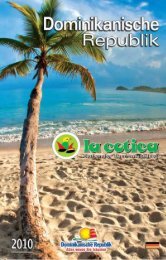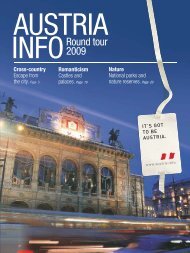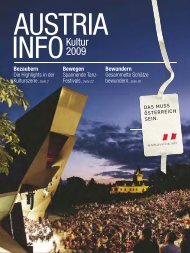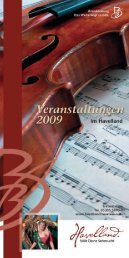i Dominican Republic - travelfilm.de
i Dominican Republic - travelfilm.de
i Dominican Republic - travelfilm.de
You also want an ePaper? Increase the reach of your titles
YUMPU automatically turns print PDFs into web optimized ePapers that Google loves.
<strong>de</strong> la Castilla, who aptly earned the<br />
appelation “Juana la loca”, wife of Felipe<br />
el hermoso. This artifact is currently on<br />
public display at the Museo <strong>de</strong> las Casas<br />
Reales, more than three centuries after<br />
Spain’s twilight in Hispaniola.<br />
Downhill on Calle Las Damas, to the<br />
right, is the Puerta <strong>de</strong> San Diego. This<br />
portal, constructed between 1540 and<br />
1555, allowed to the walled city from the<br />
harbor.<br />
To the left is the Plaza <strong>de</strong> la Contratación<br />
(The Trading Post) and, continuing to<br />
Calle Isabel la Católica, La Casa <strong>de</strong>l<br />
Cordón dating to the early 16th century.<br />
It is the first resi<strong>de</strong>ntial property to be<br />
built in Santo Domingo. Its first owner,<br />
Francisco <strong>de</strong> Garay, arrived with<br />
Christopher Columbus on his first voyage.<br />
According to the historical records,<br />
Garay was also the notary public in<br />
Hispaniola; he is also known to have<br />
amassed an immense fortune in real<br />
estate. When King Ferdinand appointed<br />
Francisco Tapia mayor of Santo Domingo<br />
<strong>de</strong> Guzmán, he also asked Don Diego<br />
Colón to vacate his resi<strong>de</strong>nce at the Torre<br />
<strong>de</strong>l Homenaje. Colon then temporarily<br />
occupied the Casa <strong>de</strong>l Cordón with his<br />
wife and entourage. It was here that his<br />
daughters Felipa and María were born in<br />
1510 and 1511respectively. Nowadays, it<br />
serves as the offices of the Banco Popular<br />
<strong>Dominican</strong>o, the entity that financed its<br />
restoration. It may be visited at no charge.<br />
El Alcázar, the Prince’s Palace<br />
A few meters away stands the Alcázar<br />
<strong>de</strong> Colón, grandiose and majestic abo<strong>de</strong><br />
that Don Diego Colón or<strong>de</strong>red to be<br />
constructed as his resi<strong>de</strong>nce. Construction<br />
work on the Alcázar’s began in 1510,<br />
with some 1,500 native Taínos laboring<br />
un<strong>de</strong>r the watchful eye of Spanish<br />
architects who were brought to the island<br />
for that purpose.<br />
Work was accomplished with very<br />
rudimentary tools: saws, chisels, and<br />
hammers. This magnificent palace, a<br />
<strong>Dominican</strong> <strong>Republic</strong><br />
59










